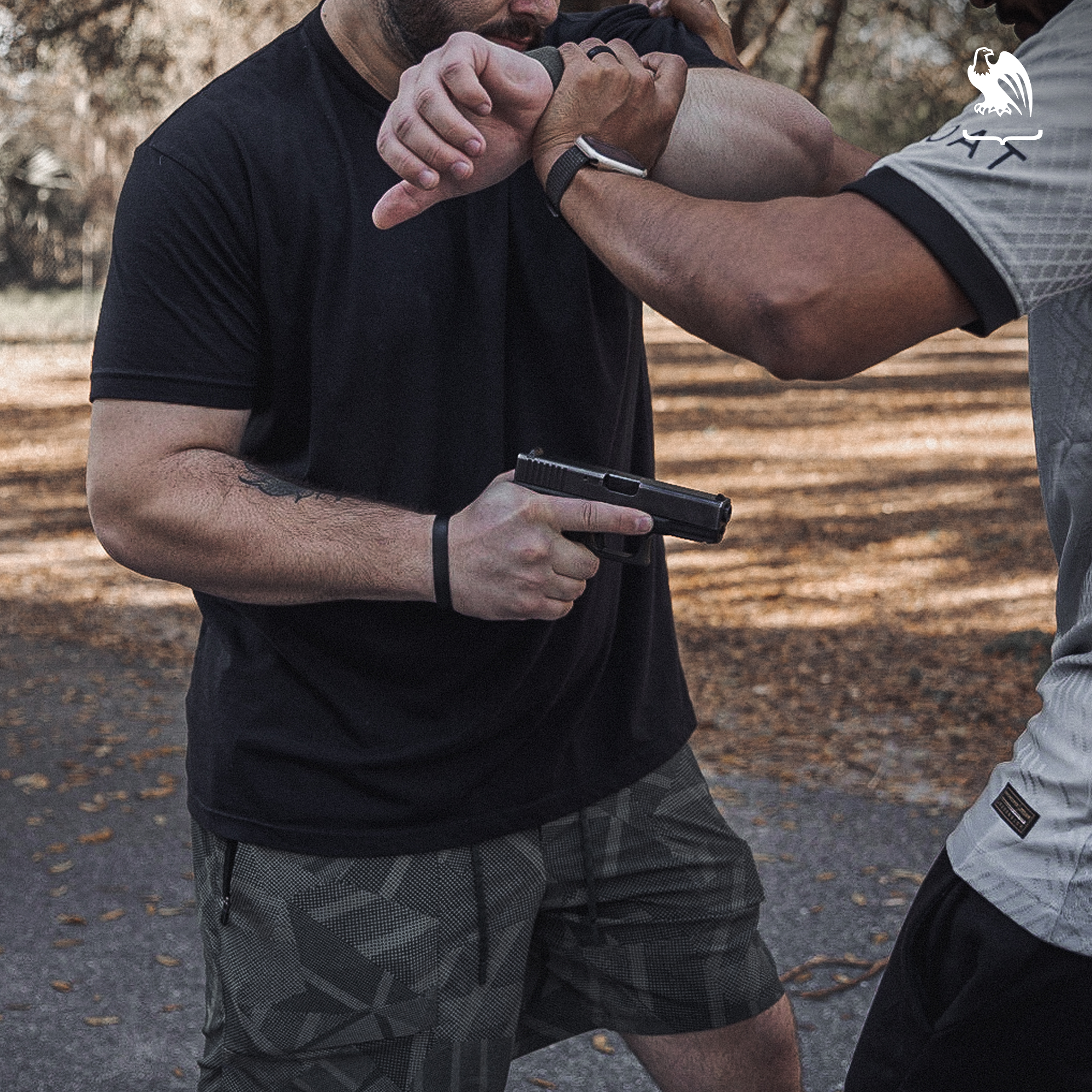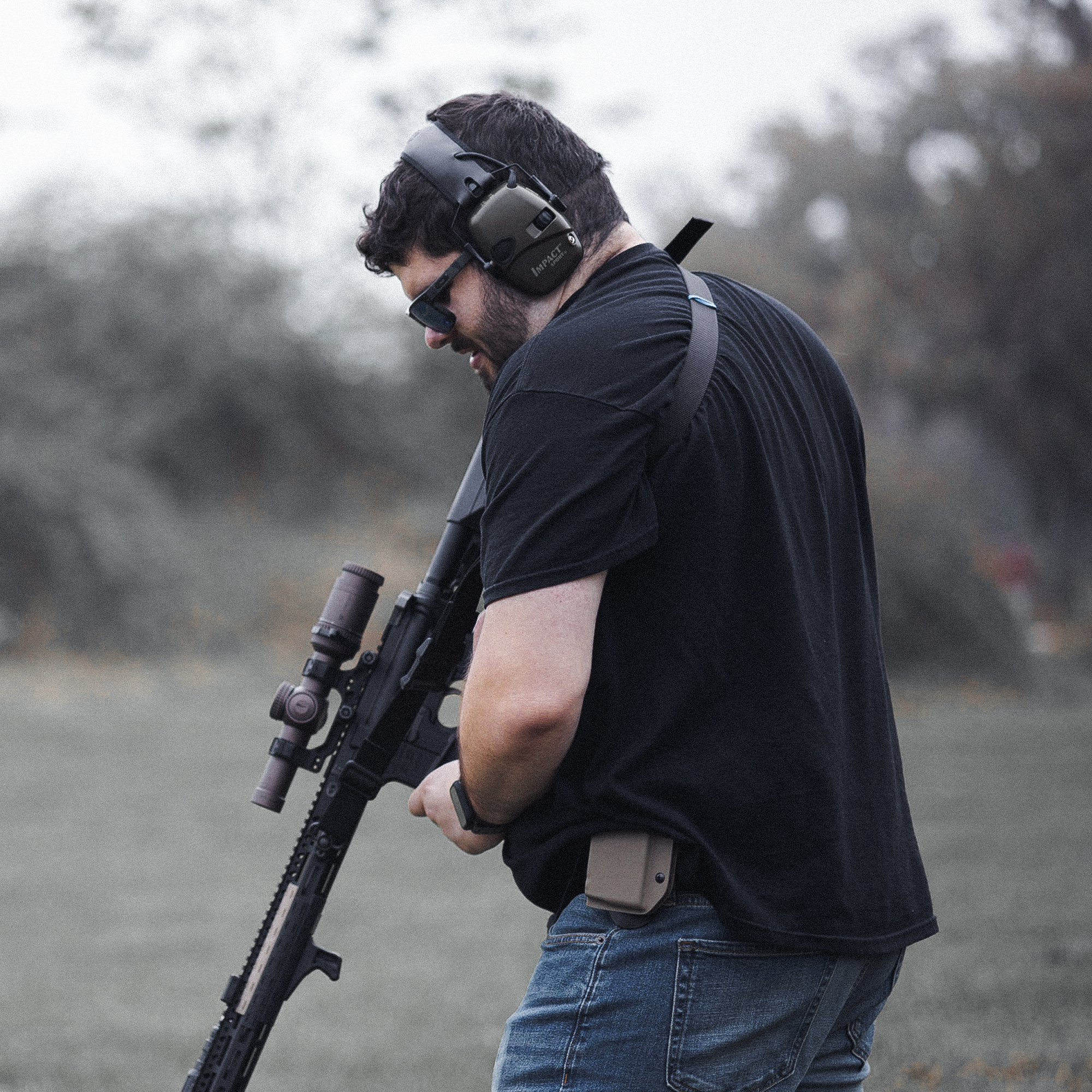One-Handed Shooting: What Is It and How Do You Do It?

You’ve probably seen plenty of movie stars shoot a pistol with one hand and thought it looked pretty cool, right? But did you know this form of shooting actually serves a purpose?
One-handed shooting not only looks awesome, but it keeps one of your hands free to use for other important things in a defensive situation and is a form of shooting that everyone should practice.
From your grip to your stance and how you angle your gun, many things can greatly impact your ability to shoot one-handed.
Before we get into the nitty-gritty of one-handed pistol shooting, let's talk a little about why someone might want to shoot one-handed.
Why Shoot One-Handed
Most common guns are held and shot with two hands, so why would someone want to consider learning and practicing how to shoot one-handed? You might be surprised to learn there are a few reasons.
Think about how often you have both hands free. Many times we are doing something with at least one of our hands. Life happens, and you want to be prepared to draw and use your weapon one-handed should the situation arise so your other hand is free to use for other purposes.
While you’ll likely be able to drop whatever you are holding if you need to draw your pistol, in some situations, that may not be the case. What if you are holding a child or protecting a loved one? If you are holding your phone, you might want to think twice before tossing it aside. Dropping your phone means leaving behind your ability to call 911.
Another possible scenario is that one of your arms or hands is injured or under the control of your attacker. All of these are possible events, and you’ll want to be prepared to defend yourself and others in case the worst happens.

How to Shoot a Pistol One-Handed
Now that you understand why one might want to learn to shoot single handed, let's talk about how.
Most of the mechanics of one-handed shooting are modeled after two handed shooting with some slight differences.
Let’s start with your stance. First, you’ll want to step forward with the same leg as your shooting hand can, as this can add stability. Some people prefer to angle their chest toward the target, while others prefer to turn sideways. Neither way is wrong, and it is up to you to find what works best for you.
Just like with two handed shooting, you’ll want to have a strong and tight grip on the gun. The web between your thumb and forefinger should be high on the backstrap, and your thumb should rest along the frame, pointed toward your target or facing up to help tighten your grip.
How you aim also greatly influences your accuracy when shooting one-handed. Aiming with your dominant eye and making sure your front and rear sights are aligned can significantly increase your accuracy. Make sure you are focused on your gun rather than your sights. While this can be one of the most challenging elements of aiming, it is essential. Some people find that canting the muzzle can help increase accuracy with one-handed pistol shooting.
The fundamentals of one-handed vs. two handed pistol shooting are, in most instances, the same, so don’t try to reinvent the wheel. For more information on “How to Hold a Handgun,” check out our recent article.
How to Practice One-Handed Shooting
You are likely aware of how important practice is when it comes to shooting with both hands. Well, making sure to practice shooting one-handed is even more essential.
Before heading to the range, if this is your first time shooting one-handed, try practicing at home. If you choose to try one-handed shooting at home, ensure that a few things are complete before you begin. First, ensure your gun is unloaded, check it once, and check it again. There should be no ammo in the magazine or the chamber. Next, remove any and all ammo from the room.
During this first practice session, focus on building your grip and trigger control. Not having your support hand on the pistol makes a good trigger press essential. Once you feel comfortable practicing dry fire, it’s time to head to the range.
If you can start your one-handed shooting practice with a low-recoil gun, we recommend doing so. Take your time getting started. Don’t be afraid to only have one round in the chamber at first to get comfortable feeling the recoil in only one hand.
Once you are feeling comfortable firing multiple rounds with your dominant hand, try switching hands. You never know which hand will be occupied in a self-defense situation, so make sure you’re prepared to shoot with either hand.
It’s important to remember that just because you practice once doesn’t mean you should stop. Regular practice shooting with both hands and just one hand can prepare you for a defensive scenario.

What Do I Do Now?
While no one wants these situations to arise, it’s a good idea to always be prepared for what may be thrown your way. Knowing how to shoot one-handed could be the thing that saves you or a loved one in an unthinkable situation.
Remember to ALWAYS practice firearm safety whether you are at home or on the range. If you want to learn more about firing a gun before putting your skills to the test, check out our “How to Pull a Trigger” article.
Make sure to check out our Range Guide before heading out for a training session so that you have everything you need for a successful range day.
If you’re looking for a new IWB, OWB, or pocket carry holster, visit our Holsters by Gun Model page for Kydex holsters that are custom-made for your weapon of choice.
Interested in items beyond holsters? Check out our Resources Page for links to recommended products like lights, lasers, first aid, maintenance, and more, and browse our selection of belts, apparel, and accessories at our website, vedderholsters.com.
To stay up-to-date on all the latest Vedder Holsters content and offerings, check out our blog and follow us on Facebook, Instagram, and Twitter. And be sure to visit our sister company, GeoGrit, for all of your American-made minimalist wallet needs.
